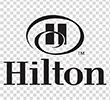"Momo" is a type of dumpling originating from Nepal and Tibet, made by wrapping a mixture of ground meat, vegetables, and spices in dough and then steaming or frying it. Momo is a popular snack or meal in various Asian countries and is often served with dipping sauces.
Momo is a dumpling that originated in Tibet and is widely enjoyed across various regions in South Asia, especially in Nepal, India, Bhutan, and Tibet itself. The history of momo food is rooted in the rich culinary traditions of these regions.
The exact origins of momo are debated, but they are generally believed to have been introduced by Tibetan immigrants and traders to the Himalayan regions and beyond. Here's a general overview of the history of momo food:
Tibetan Roots: Momo is believed to have originated in Tibet, where it is known as "mog." The traditional Tibetan momo is often larger and thicker than in other regions. It is made using a variety of fillings, including meat (such as yak, beef, or pork), cheese, vegetables, and sometimes even sweet fillings.
Spread across the Himalayas: As Tibetan communities migrated and settled in neighboring regions like Nepal, India, and Bhutan, they brought their culinary traditions with them. The momo underwent variations in size, fillings, and cooking methods to adapt to local tastes.
Nepal: Nepal has embraced momo as a staple street food and popular snack. It's widely enjoyed across the country and is often filled with minced meat (chicken, buffalo, or pork) mixed with onions, garlic, and spices. Nepalese momos are typically smaller and have a thinner dough covering.
India: In India, momos have gained immense popularity, especially in the northeastern states and in cities like Delhi. Indian momos are often made with chicken, vegetable, or paneer (Indian cottage cheese) fillings. They are usually served with spicy sauces like tomato chutney or sesame dipping sauce.
Bhutan: Bhutanese momos are also an integral part of the cuisine. They are often made with buckwheat dough and can be filled with meat or vegetables. They are usually served with a spicy red chili sauce called "essay."
Cultural Fusion and Innovation: As momos spread to different regions, local ingredients, and culinary traditions influenced their evolution. As a result, there are now countless variations of momo fillings, shapes, and preparation methods. Some places have even introduced fusion variations, such as chocolate momos or dessert momos.
Global Popularity: In recent decades, momos have gained international recognition and popularity. Nepalese and Tibetan communities worldwide have introduced momos to different countries, leading to the establishment of momo restaurants and street food stalls in various cities.
Momo's journey from its Tibetan roots to becoming a beloved dish in various parts of South Asia showcases how food can evolve and adapt while retaining its cultural significance. It has become not only a delicious treat but also a symbol of the culinary diversity of the Himalayan region.
Being a pioneer hotel training institute, we are providing MOMO-making classes for all those interested candidates who are planning to learn ideas for making different shapes, sizes, and tastes of momo.






















